
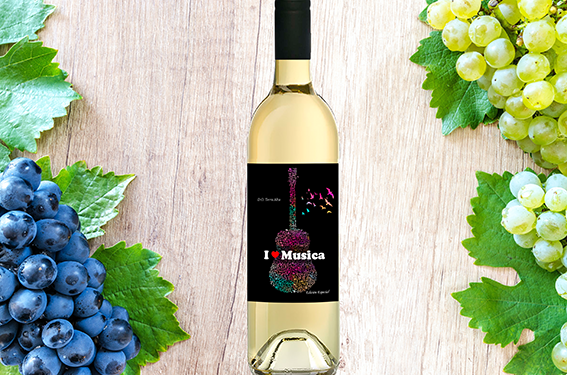



Garnacha Blanca is a grape variety that has gained recognition and popularity in global viticulture due to its unique qualities and versatility in the production of white wines. The Garnacha Blanca grape variety is a wine strain with a rich history and oenological potential. exceptional.
Garnacha Blanca, also known as Grenache Blanc in France and Garnatxa Blanca in Catalonia, Grenache wine, in English-speaking countries, a strain of white grape widely cultivated throughout the world. Although the Grenache variety is known mainly for its red grapes, White Grenache has stood out for its potential in the production of high-quality white wines.
The history of Garnacha Blanca dates back to ancient times and is intrinsically linked to the Garnacha rojo variety. Both varieties are believed to have originated in the southern region of Catalonia (Terra Alta) in the lower Aragon region of northeastern Spain. Over the centuries, it spread through Mediterranean trade routes and developed in other parts of the world. This strain has spread throughout the world and is grown in many wine regions, from Spain and France to California and Australia. This is due to its ability to adapt to different climates and soils, which makes it a versatile strain desired by winegrowers.
Terra Alta is the wine region with the highest concentration of Grenache in the world. It has 1,300 hectares of Garnacha Blanca that represent 90% of the surface of Catalonia and a third of the world’s extension of this variety. This red variety accounts for almost half of the production of this DO Terra Alta.
Garnacha Blanca is a strain that has specific morphological characteristics that distinguish it from other grape varieties. This includes the appearance of the leaves, clusters and berries. Garnacha Blanca goes through several key stages that are fundamental for its development and maturity.
Garnacha Blanca is grown in a variety of climatic and geographical conditions, allowing it to adapt to different terroirs. However, there are certain agronomic requirements that are essential for the successful cultivation of this grape variety. These include climate, soil, pruning, and pest and disease management.
The harvest stage is a critical moment in the Garnacha Blanca winemaking process. The decision of when to harvest the grapes is essential to achieve the proper balance of sugars and acidity in the must. Once harvested, the grapes go through several stages in the winemaking process, including fermentation, fining and aging.
White Grenache is characterized by a wide range of aromatic and sensory profiles that can vary significantly depending on the growing conditions and winemaking techniques used. In this section, the typical aromas and flavors associated with wines made with Garnacha Blanca will be explored.
Wine pairing is an important aspect of the dining experience, and Grenache Blanca offers unique versatility in this regard. Recommendations will be provided on which dishes and meals best complement Garnacha Blanca wines.
Garnacha Blanca is a white grape variety that is characterized by having medium to large sized clusters, with rounded, golden yellow grapes, compact and conical, with oval or slightly flattened grapes. The grapes have greenish-yellow skin and are sensitive to oxidation, it is thin and delicate, making it sensitive to damage during transportation and winemaking. However, the thin skin also allows for good flavor extraction during maceration. The leaves of Grenache Blanca are large and green, with shallow lobes and a heart-shaped shape, they are an intense green, and the grapes are delicate and sensitive to vine diseases. It is important to keep in mind that, despite being a white variety, Garnacha Blanca is genetically related to Garnacha Tinta, a red grape variety widely grown around the world.
Garnacha Blanca is grown in a wide variety of climates, making it adaptable to different wine regions. It prefers warm, dry climates, where it can mature properly. It is drought resistant and tolerates high temperatures well, making it a popular choice in Mediterranean regions.
The soil is an important factor in the cultivation of Garnacha Blanca. This type of grape thrives in calcareous, stony, well-drained soils. These soils allow good drainage and contribute to the concentration of flavors in the grapes.
The growth cycle of Garnacha Blanca is similar to that of many other grape varieties. The vine sprouts in spring, and during the summer the grape clusters develop. Ripening generally occurs in late summer or early autumn, depending on the climate and region, harvesting takes place in late August or early September. Garnacha Blanca grapes are known for reaching high levels of sugar, making them a popular choice for the production of sweet and fortified wines.


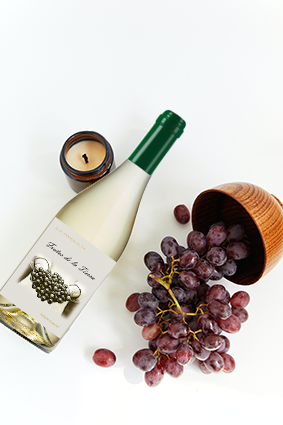


The vinification of Grenache Blanca can vary depending on the style of wine you want to produce.
Dry White Wines: To produce dry white wines, the grapes are pressed and the must is fermented at controlled temperatures in stainless steel tanks. This method highlights the fruit notes and floral characteristics of Grenache Blanca.
Sweet Wines: For sweet wines, the grapes are allowed to overripe on the vine, which increases the sugar content. The grapes are then pressed and the must is fermented at a lower temperature to preserve some of the residual sugar. These wines are known for their honey, apricot and dried fruit flavors.
Fortified Wines: Some regions, such as the south of France, produce fortified wines from Grenache Blanc. In this case, brandy is added during fermentation to stop it and preserve the natural sugar, resulting in wines with higher alcohol content and sweetness.
Flavor Profiles:
Wines made from Grenache Blanca can have a wide variety of flavor profiles, depending on winemaking style and growing conditions. However, some common traits include:
- Fruity Notes: White Grenache wines often feature fresh fruit flavors such as green apple, pear and citrus.
- Floral Notes: Floral aromas, such as white flowers and jasmine, are typical in Garnacha Blanca wines.
- Minerality: In some cases, a slight minerality can be perceived in wines, especially when grown in stony soils.
- Spices: Some versions of Grenache Blanca may have nuances of spices.
- Sweetness: Grenache Blanca is known for its ability to produce sweet, fortified wines with notes of honey and candied fruits.
Garnacha Blanca wines are versatile and can be enjoyed in many ways. Dry white wines are ideal to pair with seafood, fish, salads and chicken dishes. Sweet wines are excellent with desserts, blue cheeses and foie gras, while fortified wines are a perfect complement to appetizers and aged cheeses.
The vegetative cycle of Garnacha Blanca is essential to understand its cultivation. This strain is early maturing, meaning it sprouts and matures relatively early in the growing season. Grenache Blanca is particularly resistant to drought conditions and can adapt to a wide range of climates, making it suitable for a variety of wine regions.
The flowering period usually occurs in May or June, followed by cluster formation and grape ripening in the summer. Grenache Blanca is known for its high production and ability to adapt to various conditions, making it a popular choice for winegrowers.
Ideal Growing Conditions
Grenache Blanca thrives in a variety of climatic conditions, but prefers warm, dry climates. Mediterranean regions, such as southern France, Spain and some parts of California, are especially suitable for growing this variety. Exposure to the sun is essential to guarantee complete ripening of the grapes and the development of the characteristic flavors of Garnacha Blanca.
Soil also plays a vital role in growing this strain. Well-drained soils, with an adequate balance of minerals and nutrients, are ideal for Garnacha Blanca. The strain is drought tolerant, but controlled irrigation is necessary to maintain healthy growth and grape quality.
Preparation of Wines with White Garnacha
Grenache Blanca is prized by winemakers due to its ability to produce wines with a wide range of styles. From dry and refreshing wines to sweet and fortified wines, this strain is versatile and offers multiple options for winemaking. Here are some of the most common processes used in the winemaking of Garnacha Blanca:
Dry White Wines : For the production of dry white wines, the grapes are gently pressed to extract the must, which is fermented at controlled temperatures in stainless steel tanks. This technique highlights the fruity and floral aromas of Garnacha Blanca, resulting in fresh and balanced wines. Garnacha Blanca dry white wines are fresh and balanced, with notes of white fruits and citrus. They usually have moderate acidity and a clean finish. These wines are ideal for pairing with seafood and fish dishes.
Barrel-Aging Wines : Some winemakers choose to age White Grenache wines in French oak barrels. This process adds complexity and additional flavors, such as vanilla and toasted notes, to the wine’s flavor profile. Wines aged in French oak barrels can vary in style, from full-bodied wines to more elegant and smooth wines.
Sweet and Generous Wines : Grenache Blanc is also used to make sweet and generous wines, such as the famous Banyuls dessert wine in the south of France. In this case, the grapes are harvested with higher sugar levels, and Fermentation is stopped early to retain some of the residual sugar. These wines are usually aged in barrels or bottles for an extended period. The rancid wines from Pinell de Brai, offered by Celler 100-vinos, are left to oxidize and then age.
Table Wines : Grenache Blanca is used in the production of table wines, often as a component of blends. Its balanced acidity and notes of citrus fruits and apple make it a valuable ingredient to mix with other varieties.
Fortified Wines : White Grenache is used in the production of fortified wines, such as white Port wines, where brandy is added to stop fermentation and retain the natural sweetness of the grape. These wines are rich and concentrated, with a balance between sweetness and acidity.
Blended Wines : In some regions, Garnacha Blanca is blended with other varieties, such as Cabernet Sauvignon and Macabeo, to create blended white wines. These blends can combine the freshness of Garnacha Blanca with the complexity of other varieties.
Sparkling Wines : White Grenache is used in the production of sparkling wines, such as cava in Spain. It provides acidity and freshness to these wines, which are ideal for celebrations and aperitifs.
Natural Wines : In Terra Alta, Garnacha Blanca is used to produce natural wines, which are known for their richness and complexity. These wines often exhibit surprising flavors.
Wines made with Garnacha Blanca present a wide spectrum of sensory profiles that can vary depending on the region, growing conditions and winemaking techniques. Below are some of the common characteristics in the sensory profile of these wines:
Aromas : White Grenache wines are usually fragrant and expressive. Typical aromas include notes of white fruits such as apple and pear, white flowers, subtle herbaceous notes. Nuances of dried fruit, citrus and honey can also be found in some Garnacha Blanca wines.
Taste : In the mouth, Garnacha Blanca wines tend to be fresh and lively. They have balanced acidity and a body that can vary from light to medium. The fruity and floral flavors remain on the palate, with a minerality often present, especially in wines from calcareous terroirs. This strain tends to have moderate acidity, which contributes to its freshness and balance in the final wine. Acidity is essential to preserve the longevity and structure of white wines. Grenache Blanca can accumulate high levels of sugar in the grapes, making it a popular choice for the production of dry, semi-dry and sweet wines. Sugar levels can be controlled by harvesting at the right time.
Wines made with Garnacha Blanca usually have moderate to high levels of alcohol, which gives them a warm and round character in the mouth.
Finish : The finish can be long and persistent, with a refreshing sensation and sometimes a subtle touch of bitterness that adds complexity to the wine.
White Grenache has the ability to age well in oak barrels, which gives it complexity and notes of vanilla and toast. White Garnacha Blanca wines can benefit from bottle aging to further develop their character.
Aging on lees : Some producers choose to age Garnacha Blanca wines on lees, which adds texture and complexity to the wine. This process involves leaving the lees in contact with the wine for a certain period, which can vary depending on the style of wine desired.
Characteristics of Garnacha Blanca Cultivation
Garnacha Blanca is a grape variety that is grown mainly in Terra Alta, it is a territory that has a great variety of soils due to its geography:
Climate : Grenache Blanca thrives in hot, dry climates. It adapts well to Mediterranean climates, where it benefits from long hours of sunshine and moderate temperatures during the growing season. It is important to avoid excessively humid climates, as humidity can cause vine diseases.
Soil : This grape variety prefers well-drained soils with a moderate amount of clay and organic matter. Calcareous and stony soils are ideal for growing Garnacha Blanca, as they contribute to the complexity of the wines.
Pruning : Pruning Garnacha Blanca is essential to control production and maximize the quality of the grapes. Short pruning is used to limit yield and concentrate the flavors in the grapes, although trellising is also used, removing the leaves of the vines to increase ventilation and the proliferation of fungi in rainy seasons.
Yield : The yield of Grenache Blanca can vary depending on region and growing practices, but generally falls in the range of 3-5 tons per hectare. Limiting yield is essential to obtain high quality grapes. The yield will also be the result of the vines in terms of their water influx and age, Garnacha Blanca vines over 40 years old are considered a quality age.
Harvest : Garnacha Blanca is usually one of the first varieties to be harvested during the harvest season. The choice of harvest time is essential to achieve the balance between acidity and the desired sugar level in the grapes.
Resistance : This variety is known for its resistance to adverse climatic conditions, such as drought. However, it is sensitive to vine diseases such as powdery mildew and powdery mildew, so preventive measures should be taken.
Cross-pollination : Grenache Blanca is a self-pollinating variety, which means that its flowers can fertilize themselves. However, cross-pollination can improve the quality and consistency of the crop.
Aging : In the same Garnacha Blanca growing areas
Although there are large multinationals that buy this variety to improve their wines
Garnacha Blanca is grown in various wine regions around the world. Below are some of the most notable regions and their influence on wine:
Spain : Garnacha Blanca has its roots in Spain, where it is widely cultivated in regions such as Catalonia, specifically in the region and designation of origin Terra Alta DO Terra Alta where 33% of the world production of Garnacha Blanca is produced, and They make the best wines with this variety, also Aragon and the Valencian Community. In Catalonia it is also used to improve other varieties. It is also used to produce high quality white wines in the Priorat region.
France : In the south of France, Grenache Blanc is an important variety, especially in the southern Rhône Valley, where it is used in the production of Châteauneuf-du-Pape white wines. It is also located in the Roussillon region, where it produces high quality dry and sweet wines.
Italy : Grenache Blanc is grown in some regions of Italy, such as Sardinia and Sicily, where it is used to produce white wines with body and character.
United States : In California, Grenache Blanca has gained popularity in recent decades. The Paso Robles and Santa Ynez Valley regions are known for producing Grenache Blanca wines with rich flavors and structure.
Australia : In Australia, Grenache Blanc is grown in regions such as the McLaren Vale Valley and the Barossa Valley. It is used in both dry wines and sweet fortified wines.
Other countries : Grenache Blanca is also grown in other countries such as Greece, Israel and South Africa, which demonstrates its adaptability to different climatic conditions.
Wines made from Garnacha Blanca are known for their unique character and distinctive flavor and aroma profiles. Garnacha Blanca is a grape variety with great oenological potential that has conquered winegrowers and wine lovers around the world.
Garnacha Blanca is a versatile grape variety appreciated in the wine industry. Its growing characteristics, the strain itself, and the history of the variety combine to produce exceptional wines in a variety of styles. From dry white wines to sweet and fortified wines, Grenache Blanc has left an indelible mark on the world of wine. Its adaptability to different climates and its ability to enrich blends make it an important choice for viticulturists and wine producers around the world. Wine lovers have the opportunity to enjoy the unique flavors and aromas that this variety brings to their glasses, making it an invaluable part of the global wine industry.
Garnacha Blanca has gained popularity in recent decades due to its ability to produce high quality wines in a variety of styles and acceptance in the markets. The best wines of this variety are made in Terra Alta, for example in wine cellar 100-vinos.
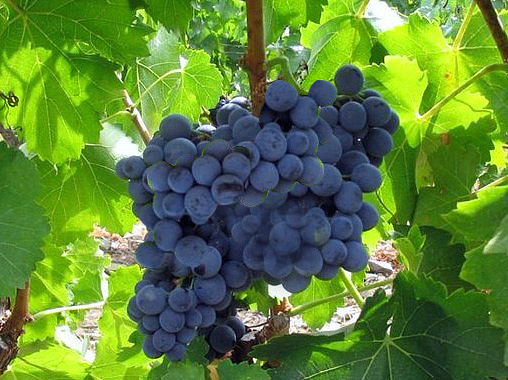
Garnatxa Peluda (GPN)
The Garnacha Peluda grape, also known as Garnacha Peluda or Garnatxa Peluda in Catalonia, is a red grape variety found primarily in the region of Catalonia, Spain, although it is also grown in other areas of the Iberian Peninsula. Garnacha Peluda is a red grape variety that is mainly grown in Catalonia (Terra Alta region), Spain. Its distinctive characteristics include the fuzz on the grape skin, fruity and aromatic flavors, and a slightly rough texture. Wines made from Garnacha Peluda are prized for their smoothness and versatility on the table, and are especially popular in the region of Catalonia. The distinctive characteristics of Garnacha Peluda are:
- Fluff on the skin: The most notable characteristic of Grenache Peluda is the presence of a type of fluff on the skin of the grapes, which gives it its name. This characteristic translates into a slightly rough texture on the skin of the grape.
- Flavor and aroma: Wines made with Garnacha Peluda tend to be fruity and aromatic. They can show flavors of red and black fruits, such as cherry, raspberry and blackberry, as well as nuances of spices and floral notes.
- Moderate acidity: Garnacha Peluda generally has moderate acidity, making it suitable for the production of wines with good freshness and balance.
- Use in single-varietal wines: Although often used in blends of varieties, Grenache Peluda is also used to make single-varietal wines in Terra Alta, Catalonia. These wines are usually smooth, fruity and easy to drink.
- Cultivation in Catalonia: Grenache Peluda is especially appreciated in Catalonia, where it is found in the wine-growing regions of Priorat, Montsant and Terra Alta. Here, it is often grown on terraces and steep slopes.
- Pairing: Wines made with Garnacha Peluda are versatile in terms of pairing and can accompany a variety of dishes, from grilled meats to game dishes, cheeses and Mediterranean dishes.
- Adaptability to warm climate: Grenache Peluda tends to be resistant to heat and drought, making it suitable for wine regions with warm climates.
Cabernet Sauvignon (CSN)
Cabernet Sauvignon is a widely cultivated red grape variety and one of the most recognized and appreciated grapes in the world. Cabernet Sauvignon is a red grape variety that produces full-bodied wines with black fruit flavors, firm tannins, and good aging ability. It is one of the most iconic varieties in the world of wine and is grown in many regions, resulting in a wide variety of wine styles. The most outstanding characteristics of Cabernet Sauvignon:
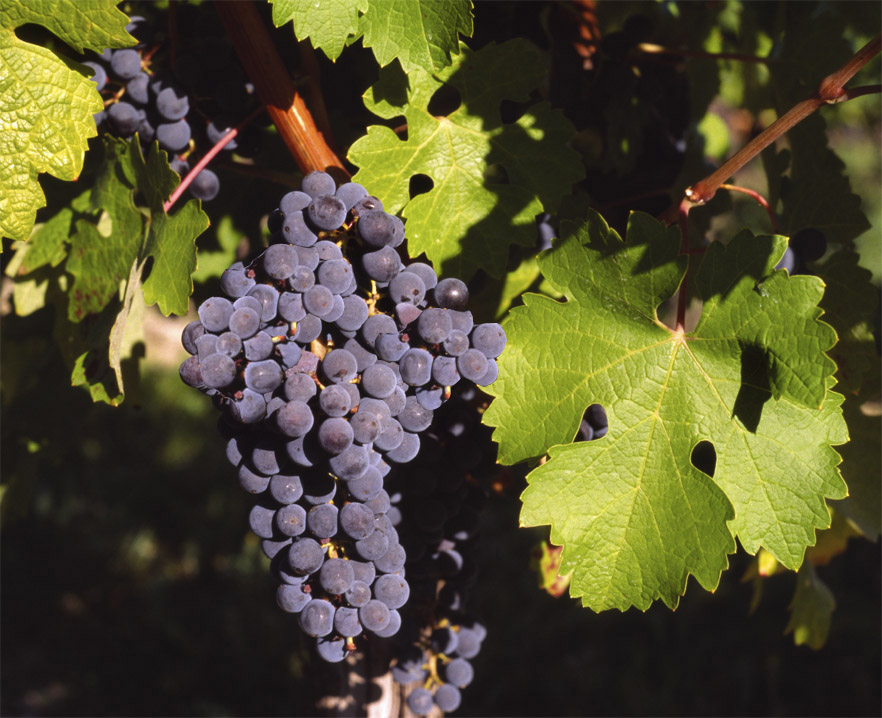
- Aroma and flavor: Wines made from Cabernet Sauvignon grapes usually have aromas and flavors of black fruits, black currant and plum, as well as notes of cedar, tobacco, green pepper, mint and spices. They can also show hints of vanilla and toast if aged in oak barrels.
- Tannins: Cabernet Sauvignon is known for its firm, structured tannins, which contribute to the longevity of the wines and their ability to age. Tannins can give the wine a dry sensation in the mouth.
- Body: Cabernet Sauvignon wines are typically full-bodied, with a rich and substantial mouthfeel.
- Versatility: Cabernet Sauvignon is versatile in terms of winemaking and is produced in a variety of styles, from dry and tannic wines to softer, fruitier wines, depending on the region and winemaking techniques. It is also used in blends, as in the case of Bordeaux wines in France, in different areas of Catalonia such as Terra Alta.
- Producing regions: Cabernet Sauvignon is grown in many wine regions around the world, in Terra Alta, some of the most notable being Napa Valley and Sonoma in California, Bordeaux in France, Coonawarra in Australia and Maipo in Chile.
- Longevity: High-quality Cabernet Sauvignon wines have good aging potential and can improve with time in the bottle. With maturity, the flavors soften and more complex nuances develop.
- Pairing: Cabernet Sauvignon wines combine well with grilled red meats, lamb, game dishes, mature cheeses and dishes with rich sauces. The robustness of these wines can complement the intense flavors of foods.
- Barrel Aging: Many wine producers choose to age their Cabernet Sauvignon wines in French oak barrels to develop more complexity and soften tannins. This can add nuances of vanilla, spice and toast to the wine’s profile.
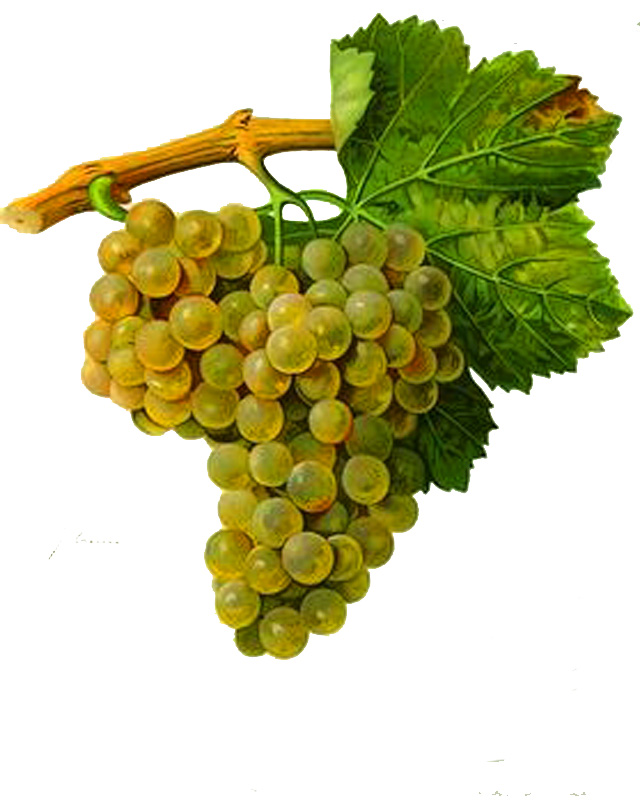
Maccabeus (MAB)
The Macabeo grape, known as Viura in Spain, is a white grape variety widely grown in several wine-growing regions of Spain, as well as other parts of the world. The Macabeo grape is a versatile white grape variety that is grown in several wine regions around the world, being especially known in Spain in Terra Alta, where it plays an important role in the production of white and sparkling wines, including Cava. Their wines are usually fresh, light and easy to drink, and are appreciated for their versatility at the table. The most outstanding characteristics of the Macabeo grape:
- Aroma and flavor: Wines made from Macabeo grapes usually have fruity and floral aromas and flavors, which can include notes of apple, pear, peach, citrus and white flowers. Macabeo tends to produce dry and light white wines, with moderate acidity.
- Versatility: Macabeo is known for its versatility in winemaking. It is used both for the production of single-varietal wines and for blending with other varieties. In addition, it is also used in the production of sparkling wines, such as Cava in Spain.
- Producing regions: Macabeo is one of the most widely grown grape varieties in Spain and is found in several wine regions, including Catalonia (Terra Alta), La Rioja and other areas of the country. In addition, it is also grown in other parts of the world, such as in the south of France and some countries in South America.
- Barrel aging: Although less common, some wine producers may choose to ferment or age Macabeo wines in oak barrels. This can give the wine vanilla and toasted flavors, as well as a richer, more complex texture.
- Cava: Macabeo is one of the main grape varieties used in the production of Cava, the Spanish sparkling wine. It provides freshness and acidity to the cavas and contributes to its fresh and fruity profile.
- Pairing: Macabeo wines are versatile in terms of pairing and can accompany a variety of dishes, including seafood, white fish, salads, chicken dishes and Mediterranean cuisine dishes.
Chardonnay (CHB)
The Chardonnay grape is a white grape variety widely grown around the world and is known for its versatility in winemaking. Chardonnay is a versatile white grape variety appreciated for its ability to produce wines with a wide variety of flavors and styles. Its adaptability to different regions and winemaking techniques has contributed to its global popularity in the world of wine. The most outstanding characteristics of the Chardonnay grape:
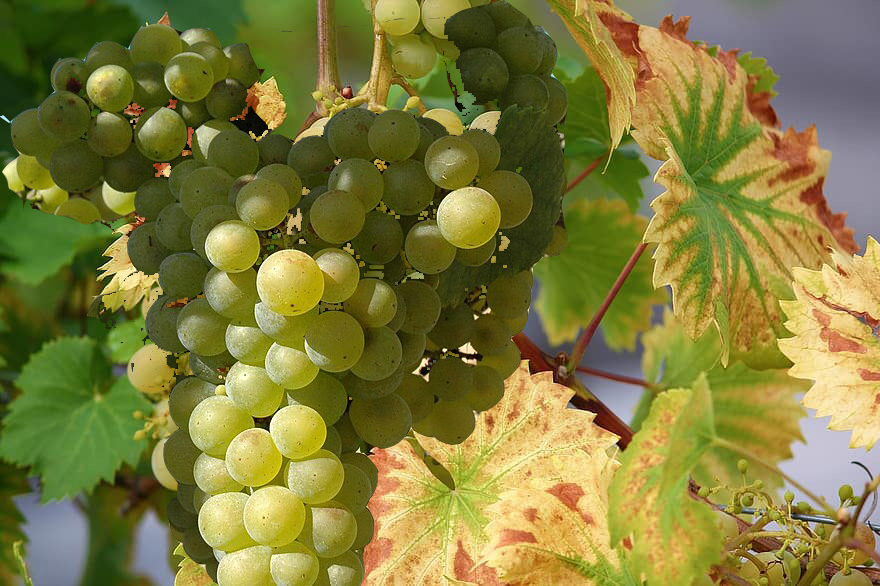
- Aroma and flavor: Wines made from Chardonnay grapes can vary significantly in flavor and aroma depending on region, winemaking techniques, and climate. Typical flavors and aromas include apple, pear, citrus, peach, pineapple, vanilla, butter and toast. They can have everything from fresh and fruity profiles to richer and more complex profiles.
- Versatility: Chardonnay is known for its versatility in winemaking. It can be used to produce a wide range of wines, from dry, refreshing white wines to full-bodied, richly flavored white wines such as barrel-aged Chardonnay. It is also used in the production of sparkling wines, such as Champagne.
- Acidity: Chardonnay has a moderate natural acidity, which contributes to its freshness and balance in the wine. This acidity can vary depending on climate and growing region, allowing winemakers to adjust the style of wines.
- Producing regions: Chardonnay is grown in many wine regions around the world, and each of these regions can produce slightly different flavor profiles. Some of the most famous regions for growing Chardonnay include Burgundy in France, California in the United States, Australia, New Zealand, and South Africa.
- Aging Characteristics: High-quality Chardonnay wines, especially those aged in barrels, can age very well. Over time, they develop more complex flavors and aromas, such as nutty, honey, and toasted notes.
- Barrel aging: Barrel aging is a technique commonly used in the production of Chardonnay. This can give the wine vanilla and toasted flavors, as well as a creamier, smoother texture. The length and type of barrels used can vary to produce different styles of Chardonnay.
- Pairing: Chardonnay wines are versatile in terms of pairing. They can accompany a wide variety of dishes, from seafood and poultry to pasta dishes with creamy sauces and pork dishes. The ideal pairing depends largely on the specific style of Chardonnay and the food served.
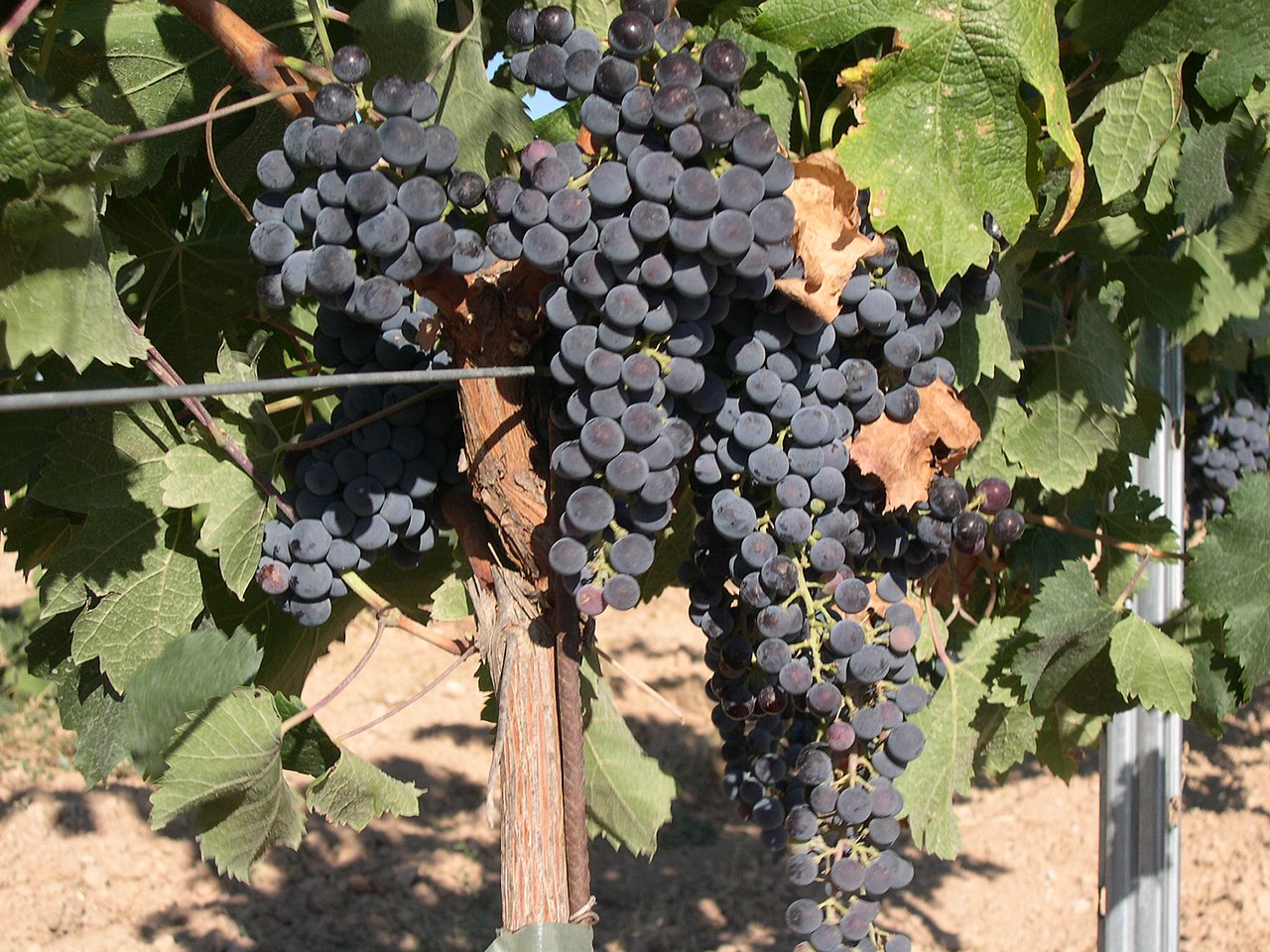
Merlot (MEN)
Merlot is a red grape variety widely grown around the world, it is also grown in Terra Alta and is known for its versatility in winemaking and its ability to produce high-quality wines. Merlot is known for its smoothness, fruity flavors and versatility in winemaking. It is a popular choice for those looking for more accessible and easy-drinking red wines. Its cultivation in numerous wine regions around the world has contributed to its global popularity. The most outstanding characteristics of Merlot:
- Aroma and flavor: Wines made from Merlot grapes are usually soft, fruity and medium-bodied. Typical flavors and aromas include red fruits such as cherry, plum, strawberry and blackberry notes, as well as hints of spices, herbs and sometimes earthy nuances.
- Softness: Merlot is characterized by its softness and moderate tannins, making it an attractive option for those who prefer lighter, more accessible red wines. This characteristic makes Merlot a popular wine among casual drinkers and beginners.
- Versatility: Merlot is a versatile grape variety that can be used to produce a wide range of wines, from dry and soft wines to more structured and powerful red wines. In addition, it is also used in the production of blended wines to soften and round out other more tannic wines.
- Early ripening: Merlot grapes tend to ripen earlier in the season than some other grape varieties. This contributes to its success in diverse wine regions.
- Producing regions: Merlot is grown in many wine regions around the world. Some of the most famous areas for Merlot cultivation include Terra Alta in Catalonia, Bordeaux region in France, California in the United States, Italy, Chile, Australia.
- Longevity: Although Merlots tend to be wines enjoyed in their youth, in some cases, high-quality Merlot wines can age very well in the bottle, developing more complex flavors and aromas as they age.
- Pairing: Merlot wines are versatile in terms of pairing and tend to pair well with a wide variety of foods, including roast meats, poultry, pastas, soft cheeses and Mediterranean dishes.
Cabernet Franc (CFN)
Cabernet Franc is a red grape variety that is grown around the world, although it is especially known for its role in Bordeaux wines in France, it is also a variety grown in Terra Alta. Cabernet Franc is a red grape variety that produces fresh, aromatic wines with herbaceous and floral notes. It is versatile in winemaking and is grown in numerous wine regions around the world, Terra Alta, being especially prominent in Bordeaux and the Loire Valley in France. Its aging capacity and versatility on the table make it a variety appreciated by wine lovers around the world. The most outstanding characteristics of Cabernet Franc:
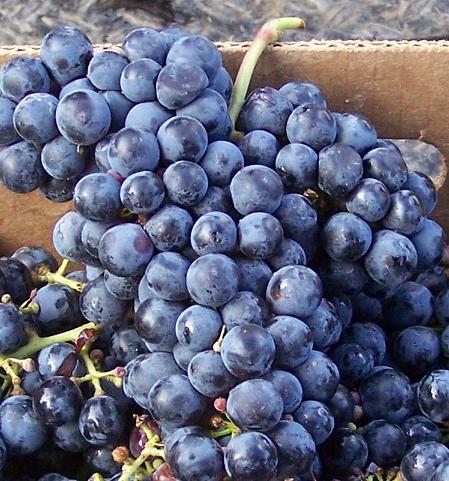
- Aroma and flavor: Wines made from Cabernet Franc grapes usually have aromas and flavors of red and black fruits, such as raspberry, cherry, black currant and plum, as well as herbaceous, floral and spicy notes. They often display a more herbaceous and less tannic character than Cabernet Sauvignon, with softer tannins and fresh acidity.
- Versatility: Cabernet Franc is a versatile grape that can produce a variety of wine styles. It is used both in single-varietal wines and in blends with other varieties, such as Cabernet Sauvignon and Merlot. In the Bordeaux region, it is used in the production of quality red wines.
- Producing regions: Cabernet Franc is grown in many wine regions around the world. In France, it is part of the blend in red Bordeaux wines, particularly in the Saint-Émilion region. It is also the main variety in Chinon and Bourgueil in the Loire Valley. Other countries, such as Italy, the United States, Argentina and Chile, also produce quality Cabernet Franc wines.
- Acidity: Cabernet Franc typically has moderate to high acidity, which contributes to its freshness and ability to pair with a variety of foods.
- Pairing: Cabernet Franc wines are versatile in terms of pairing and can accompany a wide range of dishes. They pair well with grilled meats, pork dishes, poultry, lamb dishes, cheeses and dishes with herbal sauces.
- Early ripening: Cabernet Franc tends to ripen earlier in the season than Cabernet Sauvignon.
- Barrel aging: Some producers choose to age Cabernet Franc wines in oak barrels to develop complexity and soften tannins. This can add vanilla and toasted nuances to the wine’s profile.
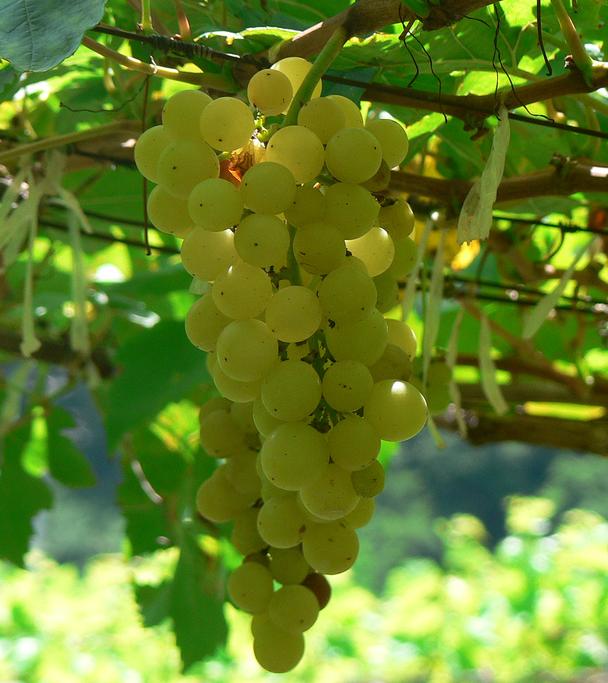
Chenin Blanc (CNB)
Chenin Blanc is a white grape variety widely grown around the world, with a particular emphasis on France, South Africa and Spain. This grape is known for its versatility and ability to produce a wide range of wines, from dry to sweet. Chenin Blanc is a versatile white grape variety appreciated for its ability to produce a wide variety of wines with different styles and flavors. Its natural acidity and adaptability to various winemaking techniques make it a popular choice for both dry and sweet wines in wine regions around the world. The most outstanding characteristics of the Chenin Blanc grape:
- Aroma and flavor: Wines made with Chenin Blanc can exhibit a wide variety of aromas and flavors, which can include notes of green apple, pear, peach, citrus, honey, white flowers and dried fruits. These characteristics can vary depending on the climate, the maturity of the grapes and the winemaking techniques.
- Versatility: Chenin Blanc is known for its versatility in winemaking. It can be used to make dry, semi-dry, semi-sweet, sweet and sparkling wines, which makes it a grape that is very adaptable to different styles of wine.
- Natural acidity: One of the most notable characteristics of Chenin Blanc is its high natural acidity. This acidity brings freshness and liveliness to wines, making it especially suitable for the production of dry and sparkling wines, as well as balanced dessert wines.
- Aging ability: Quality Chenin Blanc wines can age very well over time. With aging, flavors can evolve and develop greater complexity, taking on nutty and honey notes, especially in sweet wines.
- Producing regions: Spain, Terra Alta. France, and in particular the Loire Valley, is one of the most emblematic places for the cultivation of Chenin Blanc. South Africa also grows Chenin Blanc in large quantities, where it is known locally as ‘Steen’.
- New World Appeal: Chenin Blanc has gained popularity in the New World, with wine regions in countries such as the United States, Australia and New Zealand adopting this variety and producing quality wines with unique characteristics.
Morenillo (MLN)
The Morenillo grape is a red grape variety that is mainly grown in the Terra Alta region of Catalonia, Spain. Although it is not as well known as some other grape varieties, it has its own distinctive characteristics. The Morenillo grape is a rare red variety. It produces wines with fruity aromas and flavors, good acidity and soft tannins. Although not as widely recognized as other grape varieties, Morenillo is gaining interest in the wine industry due to its unique characteristics and potential to produce quality wines. The characteristics of the Morenillo grape:
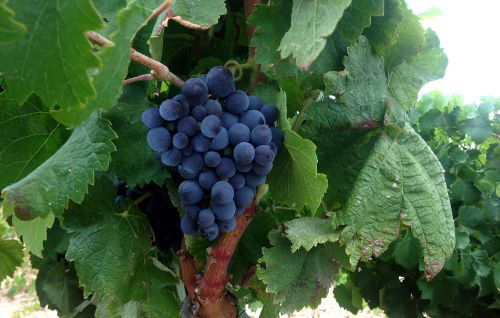
- Color: Morenillo grapes are red grapes and therefore produce red wines. The skin of the grapes is a dark color, often almost black, which contributes to the color intensity of the wines.
- Aroma and flavor: Wines made from Morenillo grapes usually have fruity aromas, such as raspberries, strawberries and cherries. They can also present spicy and floral notes, which adds complexity to the aromatic profile. In terms of flavor, these wines tend to be fresh, with good acidity and soft tannins.
- Limited Production: The Morenillo grape is a rare grape variety and is grown in relatively small quantities. This makes it a more exclusive grape variety, and wines made from Morenillo are often prized for their uniqueness.
- Cultivation in Catalonia: Morenillo is mainly grown in the Terra Alta region of Catalonia, in the northeast of Spain, in the Terra Alta area, it is found in traditional vineyards and is used in both single-varietal wines and blends.
- Versatility in winemaking: Although it is possible to find wines made exclusively with Morenillo grapes, it is also often used in blends with other varieties to add complexity and character to the wines.
- Adaptation to the Mediterranean climate: The Morenillo grape is resistant to the Mediterranean climate, making it suitable for the Terra Alta region of Catalonia, where summers are hot and dry.
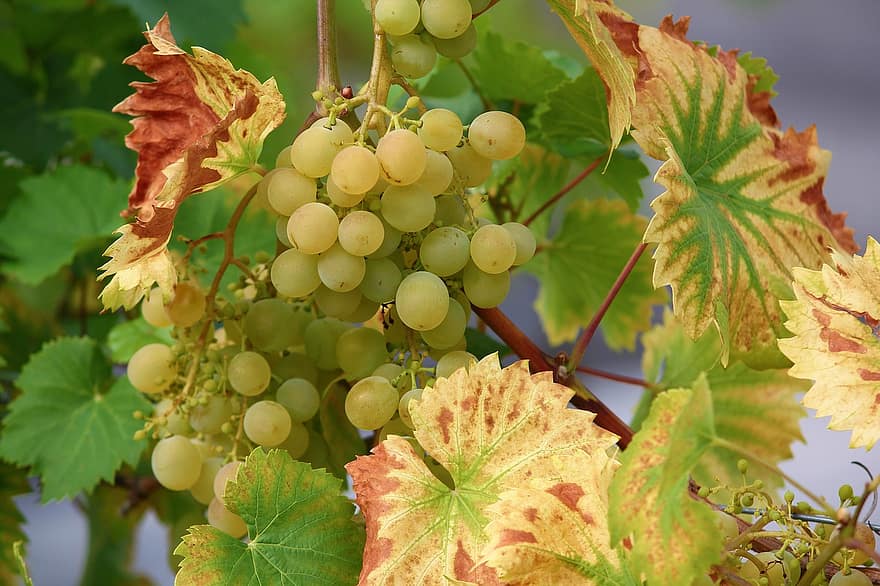
White Grenache (GAB)
Garnacha Blanca, known as Garnatxa Blanca in Catalonia and Wine Grenache in English, is a white grape variety grown in several wine regions around the world. Garnacha Blanca is a versatile white grape variety appreciated for its ability to produce a wide range of wines with different styles and flavors. Its freshness and adaptability to different climates and regions make it a popular choice in winemaking around the world. The most outstanding characteristics of Garnacha Blanca:
- Aroma and flavor: Wines made with Garnacha Blanca grapes usually have fruity and floral aromas and flavors. They can include notes of white and yellow fruits, such as apple, pear, peach, apricot and citrus, as well as nuances of white flowers and herbs.
- Acidity: White Grenache usually has moderate to high acidity, which provides freshness and balance to the wines. This acidity can vary depending on the climate and growing region.
- Versatility: Grenache Blanca is known for its versatility in winemaking. It can be used to produce dry wines, semi-dry wines, dessert wines and sparkling wines. In addition, it is used both in single-varietal wines and in blends with other varieties.
- Producing regions: Grenache Blanca is grown in many wine regions around the world, including Catalonia in Spain, where the Terra Alta region is located, which produces 33% of the world’s production of Grenache Blanca, the Rhône Valley in France, California in the United States, and many other regions in Europe, Australia and South Africa.
- Barrel Aging: Some producers choose to ferment or age Garnacha Blanca wines in French oak barrels to develop complexity and give the wine vanilla and toasted nuances. This adds a richer, more complex texture to the wine’s profile.
- Pairing: Garnacha Blanca wines are versatile in terms of pairing and can accompany a variety of dishes, including seafood, white fish, chicken dishes, soft cheeses and Mediterranean dishes.
- Adaptability to hot climate: Grenache Blanca is known for its ability to adapt to hot, dry climates, making it suitable for regions with hot summers and little rainfall.
Muscat of Alexandria (MJB)
Muscat of Alexandria is a grape variety that is mainly used for the production of wine, although it is also consumed as a table grape. Muscat of Alexandria is a grape variety with a strong aromatic character and a high natural sugar content, which makes it ideal for the production of sweet wines, dessert wines and mistelas. Its thick skin and heat resistance make it a versatile grape for winemaking, and it is prized in many wine regions around the world. It has several distinctive characteristics that influence its use in winemaking and its flavor. The most outstanding characteristics of the Muscat of Alexandria:
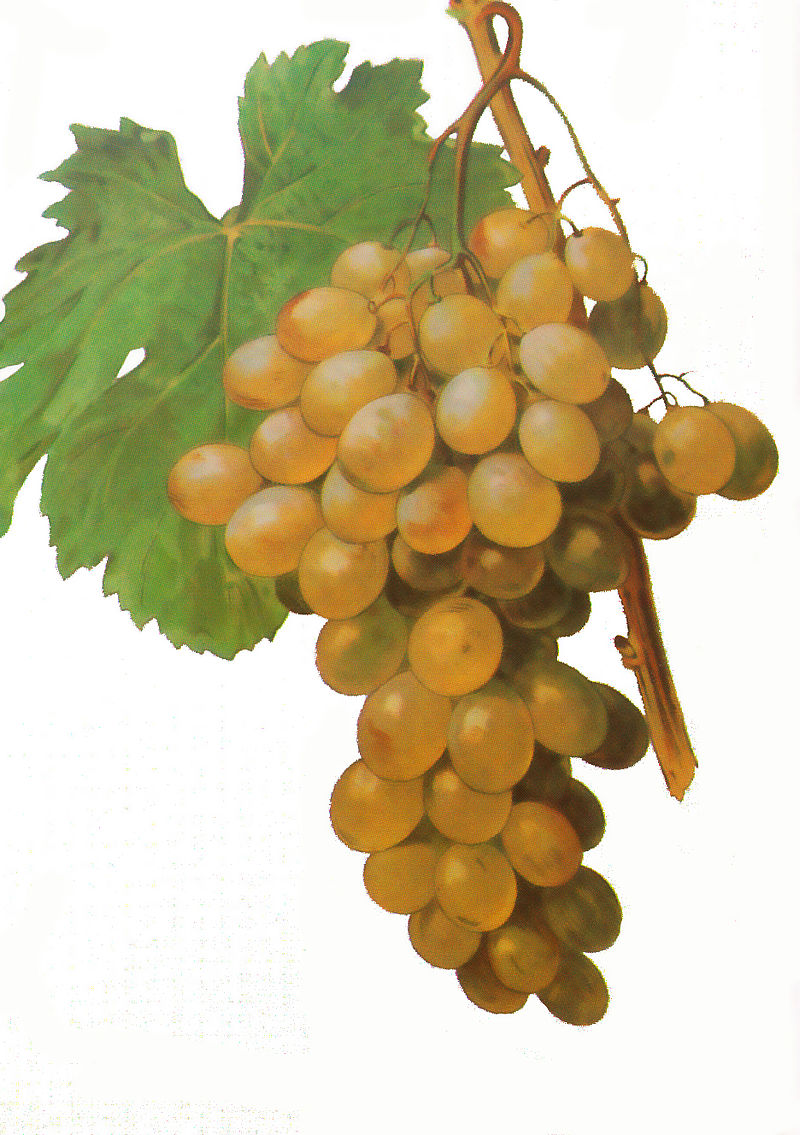
- Distinctive aroma and flavor: Muscat of Alexandria is known for its intense aroma of grapes, flowers and notes of tropical fruits. Wines made from this grape usually have sweet and fruity flavors, with hints of apricot, peach and orange, as well as floral and honey nuances.
- Thick skin: Muscat of Alexandria grapes have a thick skin, making them resistant to rot and insect damage. This is beneficial both for consumption as table grapes and for winemaking.
- High Natural Sugar: These grapes are known for their high natural sugar content, making them ideal for producing sweet wines and dessert wines. The high level of sugar results in wines with a higher residual alcohol content and, therefore, greater sweetness.
- Cultivation in warm climates: Muscat of Alexandria adapts well to hot and dry climates. It is a variety resistant to heat and drought, making it suitable for regions with hot summers and little rainfall.
- Popularity in fortified wines: This grape variety is especially known for its use in the production of fortified wines, such as the famous Jerez (Sherry) and Malaga wines in Spain. Muscat of Alexandria is one of the main varieties used in these wines, which tend to have a high sugar and alcohol content.
- Use in dry and sweet wines: Although it is known for its contribution to sweet wines, Muscat of Alexandria can also be used to make dry wines with good balance and aroma, although to a lesser extent.
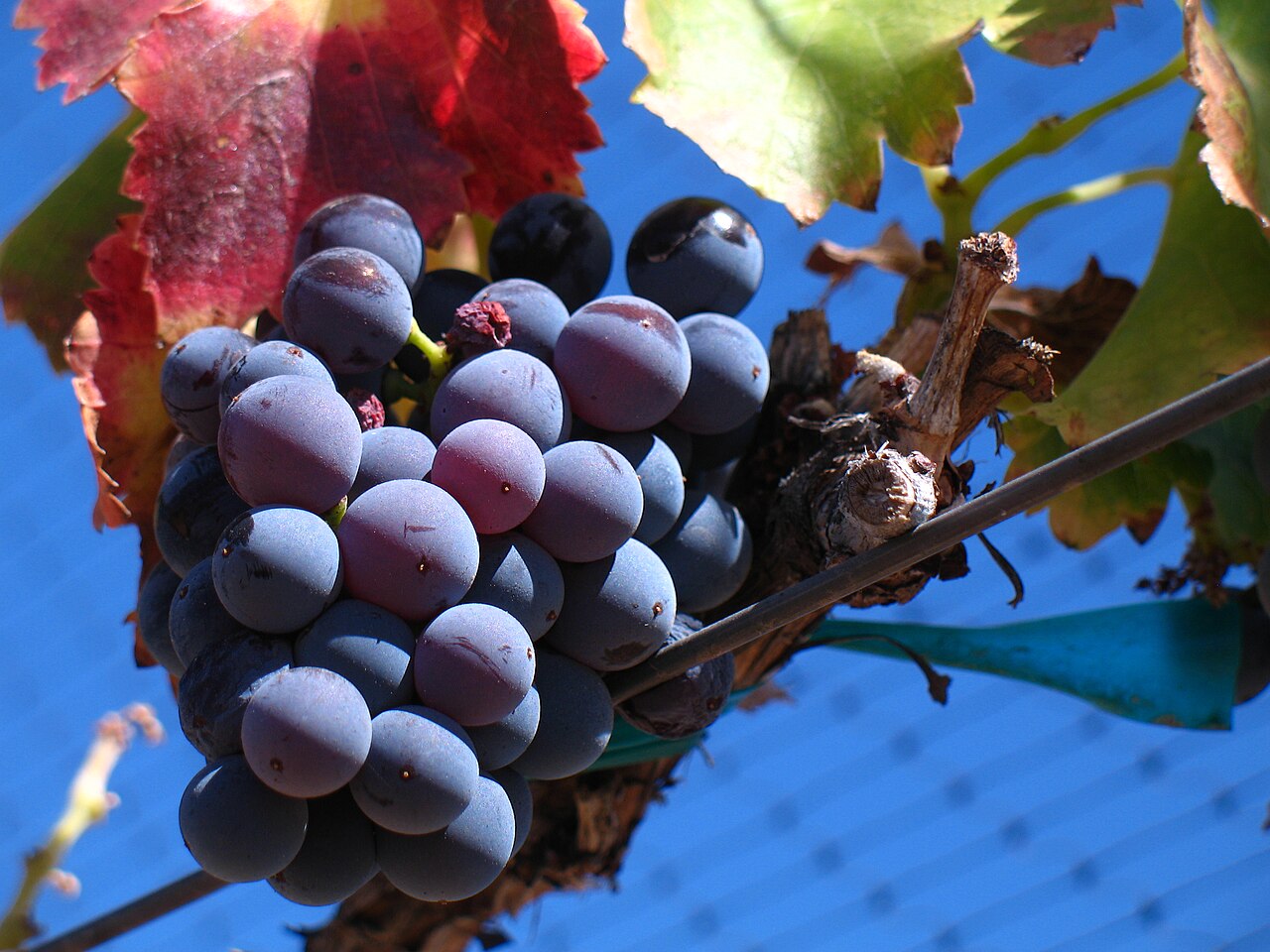
Black Grenache (GAN)
Black Grenache, known as Garnatxa Negra in Catalonia and Grenache Noir in French, red Grenache in English, is a red grape variety widely grown in many wine regions around the world. Black Grenache is a versatile red grape variety prized for its ability to produce wines with fruity and spicy flavors, soft tannins and a pleasant body. Its adaptability to different climates and regions makes it a popular choice in winemaking around the world. The most outstanding characteristics of Black Grenache:
- Aroma and flavor: Wines made with Garnacha Negra grapes usually have fruity and spicy aromas and flavors. They can include notes of red and black fruits, such as raspberry, cherry, blackberry and currant, as well as hints of spices, such as black pepper and cinnamon.
- Versatility: Black Grenache is known for its versatility in winemaking. It can be used to produce dry red wines, full-bodied reds and sweet wines, as well as blending wines with other varieties.
- Soft tannins: Black Grenache wines tend to have soft, pleasant tannins, making them easy to drink in their youth. This feature makes them a popular choice for those looking for lighter, more accessible wines.
- Body and acidity: Grenache Negra can produce medium to full bodied wines with moderate acidity. The texture in the mouth is usually soft and silky, which contributes to the pleasant experience of drinking these wines.
- Producing regions: Grenache Noir is grown in many wine regions around the world, including the south of France, Catalonia in Spain, California in the United States, and other European countries, as well as in regions of South America and Australia.
- Early ripening: Grenache Noir usually ripens early in the season, reducing the risk of spring frost in some regions. It can also produce a high concentration of sugar, making it suitable for the production of wines with high alcohol content.
- Barrel aging: Some producers choose to age Grenache Noir wines in oak barrels to develop more complexity and give the wine nuances of vanilla and toast. This can add an extra layer of flavor and aroma.
- Pairing: Grenache Negra wines are versatile in terms of pairing and can accompany a variety of dishes, including grilled meats, pork dishes, poultry, cheeses and Mediterranean dishes.
Small grain muscatel (MFB) Small grain muscatel
Small grain Muscat is a white grape variety from the Muscat grape family (Muscat in French). This grape is known for its distinctive fruit and flower aroma and flavor, making it highly prized in winemaking to produce dry, sweet and sparkling wines. Wines made from small grain Muscat are known for their fragrance and freshness, making them a popular choice for those who appreciate fruity and floral flavors in wine. They are ideal as an aperitif, to accompany desserts or as after-dinner wines. Key Features of Small Grain Muscat:
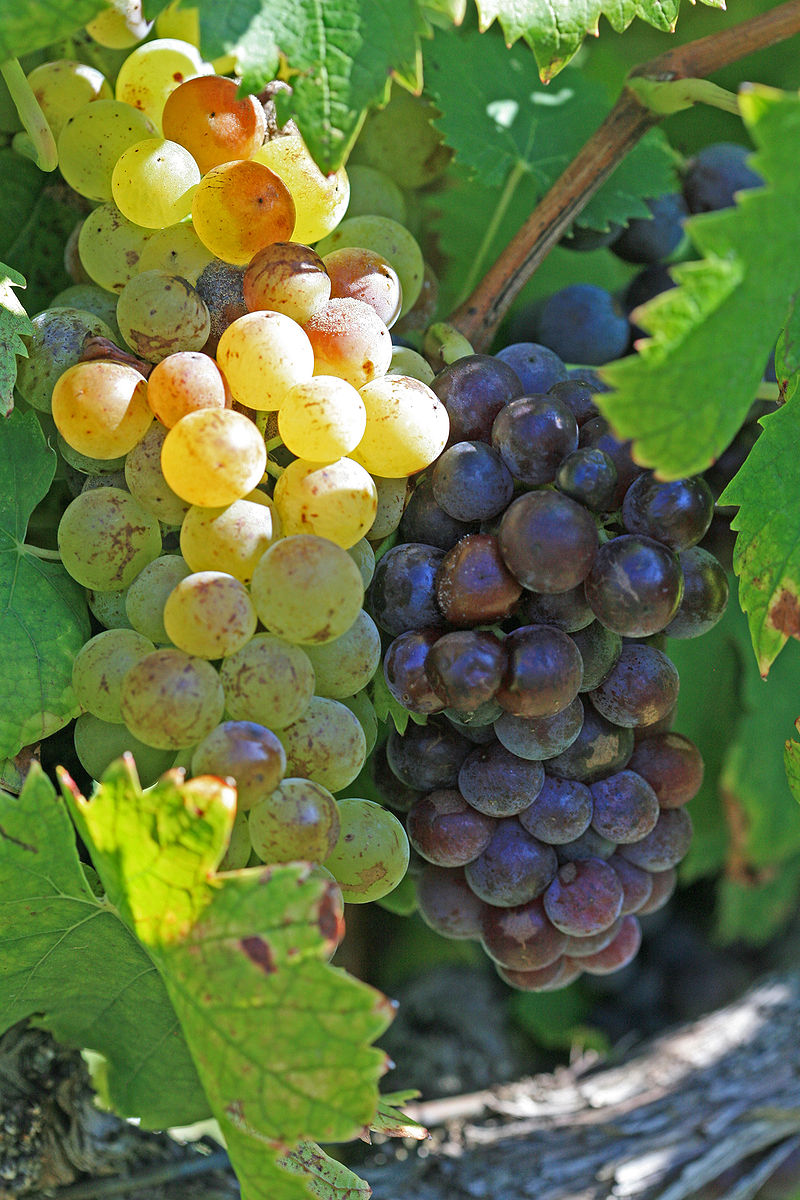
- Aroma and flavor: Wines made with Muscat Blanc à Petits Grains grapes are usually very aromatic and show flavors of fresh grapes, orange blossom, citrus, apricot and other fruity and floral nuances. The aroma is often described as «muscat» or «moscatel», and is extremely distinctive.
- Small Grain: The name “à Petits Grains” refers to the smaller grape grains in the clusters of this variety, often resulting in a concentration of flavors and sugars.
- Versatility: Small grain Muscat wines are used in a wide variety of wine styles, from dry and crisp wines to sweet, dessert and sparkling wines. They are also used in the production of liqueur wines and mistelas.
- Producing regions: It is grown in many wine regions around the world, in Terra Alta Catalonia, including the south of France (where it is especially important in the Rhône Valley and Languedoc), Italy (where it is called Moscato), Spain, Australia, and California.
- Use in sweet and dessert wines: Due to their high sugar content and aromatic profile, small grain Muscat grapes are often used in the production of sweet and dessert wines, such as Muscat de Beaumes-de-Venise in France, Moscato d’Asti in Italy and Moscatel in Spain.
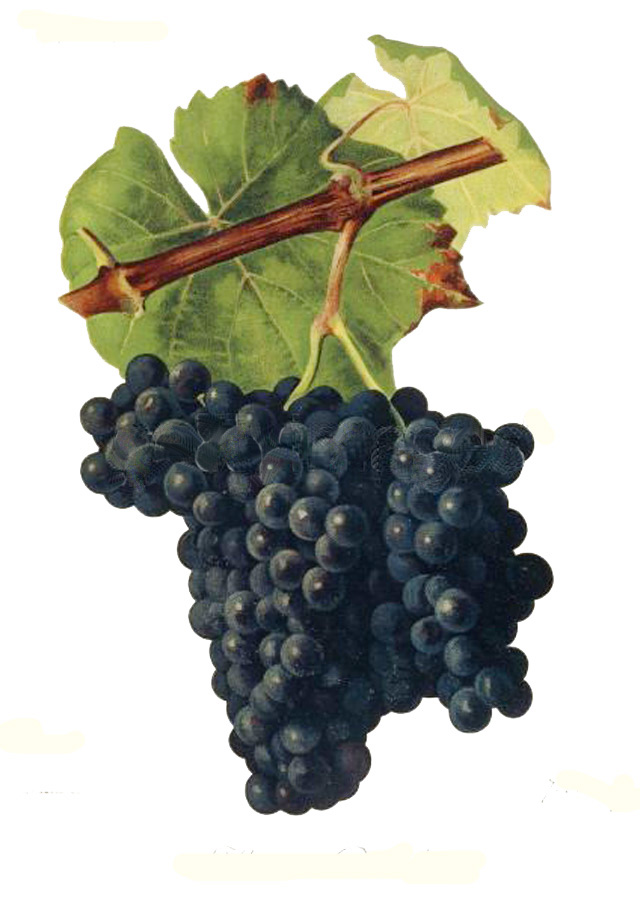
Garnacha Tintorera (GTN)
Garnacha Tintorera, also known as Garnatxa Tintorera in Catalonia, is a red grape variety that is characterized by having intense red pulp and juice, which makes it unique among red grape varieties. Unlike most red grapes, in Garnacha Tintorera, the red color is also found in the pulp of the grape, not just the skin. This results in wines with great color intensity and a particularly dark appearance. Garnacha Tintorera is appreciated for its ability to produce red wines with a great concentration of color and flavor. Its intense red pulp and juice are distinctive and give it a unique role in the world of red grape varieties. Wines made with Garnacha Tintorera are ideal for those looking for red wines with body and deep color. The main characteristics of Garnacha Tintorera:
- Color: As mentioned above, Garnacha Tintorera is characterized by its intense red pulp and juice, which results in wines with a deep and dark color.
- Aroma and flavor: Wines made with Garnacha Tintorera grapes usually have aromas and flavors of black fruits, such as blackberries and plums, as well as touches of spices, herbs and mineral notes. Wines can be rich and complex, with soft tannins.
- Versatility: Garnacha Tintorera is used both for the production of single-varietal wines and in blends with other varieties. The intensity of its color is often used to enhance the color of other wines.
- Producing regions: Garnacha Tintorera is grown in several wine regions of Spain, in the Terra Alta Catalonia, it is also especially known in the region of Almansa, in the province of Albacete. It is also found in other parts of Europe and America.
- Pairing: Garnacha Tintorera wines usually pair well with roast meats, stews, lamb, game dishes, strong cheeses and dishes with an intense flavor.
Parellada (PAB)
Parellada is a white grape variety widely grown in the wine-growing region of Catalonia, in Spain, and especially in the Cava appellation of origin. This grape is one of the traditional varieties used in the production of sparkling wines and is characterized by its qualities that contribute to the freshness and balance in these wines. The Parellada grape is a white grape variety appreciated for its contribution to the production of high-quality sparkling wines, especially Cava. Its high acidity and fresh, floral flavors make it ideal for this purpose, and its versatility makes it a valuable grape in winemaking in Catalonia and other regions of Spain. The most outstanding characteristics of the Parellada grape:
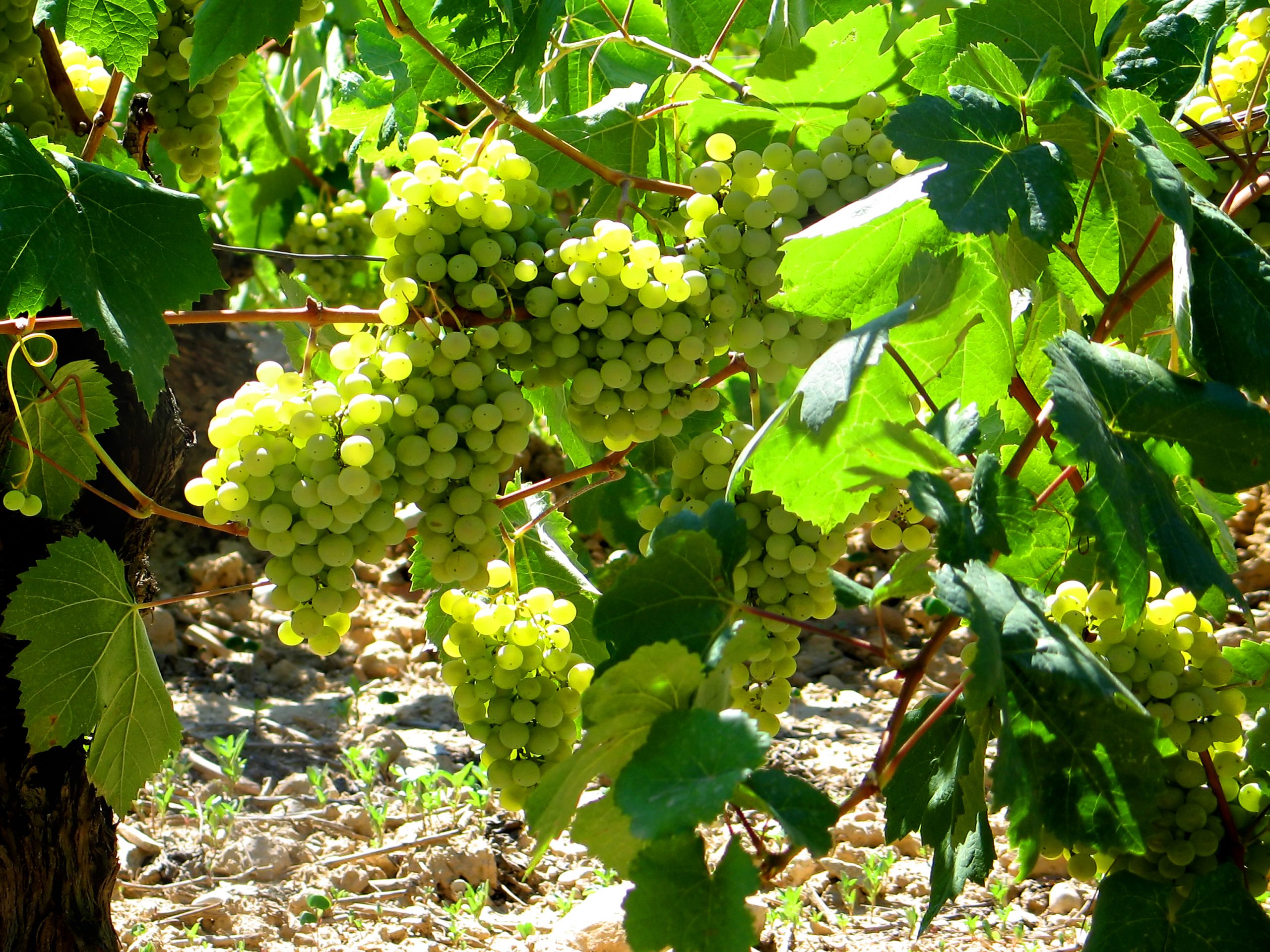
- Aroma and flavor: Wines made with Parellada grapes usually have moderate alcohol content, fresh and floral aromas and flavors, with hints of green apple, pear, citrus and white flowers. These flavors and aromas are appreciated for their elegance and delicacy.
- Acidity: Parellada has a high natural acidity, which makes it ideal for the production of sparkling wines. This acidity contributes to the freshness and liveliness of the cavas and other sparkling wines in which it is used.
- Versatility: Although widely known for its role in the production of sparkling wines, Parellada is also used in dry white wines and other wine styles in the Catalonia region.
- Cava: The Parellada grape from Terra Alta is one of the traditional varieties used in the production of Cava, a Spanish sparkling wine. In cavas, it is often mixed with other varieties, such as Macabeo and Charelo, to create a balanced final product.
- Producing regions: Parellada is mainly grown in Catalonia, in Terra Alta, especially in the areas of Penedès, but it is also found in other regions of Spain.
- Pairing: Wines made with Parellada are versatile in terms of pairing and can accompany a variety of dishes, such as fish, seafood, chicken dishes and light appetizers.
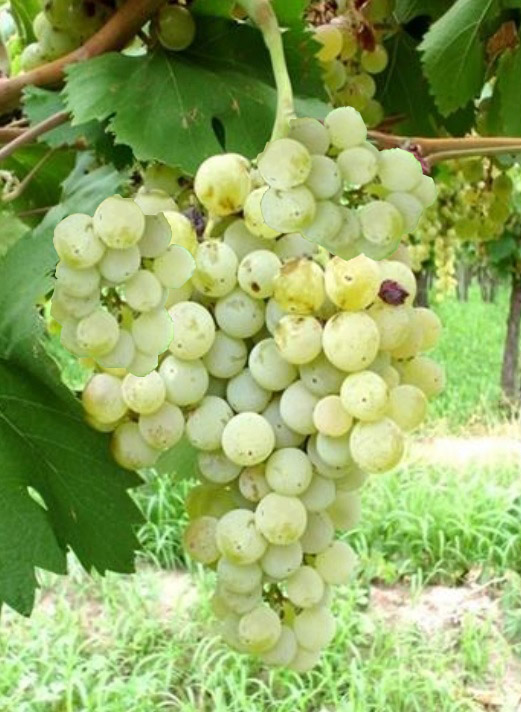
Pedro Ximenez (PXB)
Pedro Ximénez, also known abbreviated as «PX,» is a white grape variety used primarily in the Jerez region of southern Spain for the production of sweet Sherry wines and fortified Cream-type wines. This grape is especially known for its ability to produce extremely sweet and rich wines, which are highly prized for their complexity and flavor. Pedro Ximénez wines are prized for their richness and concentrated flavor, and are typically consumed as dessert wines or accompaniment to desserts, cheeses and chocolates. Their sweetness and complexity make them a delight for lovers of sweet and fortified wines. The most outstanding features of the Pedro Ximénez:
- Grape for sweet wines: Pedro Ximénez is one of the main grapes used to produce sweet sherry wines, particularly PX (Pedro Ximénez) wines. These wines are known for their intense sweetness and flavors of dried fruits, caramel, raisins, figs and nuances of spices.
- Soleo and raisining: To produce PX wines, Pedro Ximénez grapes undergo a raisining process, which involves exposure to the sun to concentrate the sugars and obtain dry grapes. This results in a very sweet wort that is fermented and then fortified with wine spirit to stop fermentation and preserve the sweetness.
- Complex aromas and flavors: Pedro Ximénez wines are known for their complex aromatic profile that includes notes of caramel, coffee, figs, dates, nuts, chocolate and spices, along with a sweet and viscous character on the palate.
- High alcohol content: These sweet wines usually have a higher alcohol content due to the addition of brandy, which contributes to their aging capacity.
- Crops: Jerez Region, the Pedro Ximénez variety is typical of the Jerez wine region in Andalusia, Spain, where they are used to produce sweet sherries and other styles.
- Cream-type fortified wines: Pedro Ximénez is also often blended with drier sherry wines, such as Oloroso or Amontillado, to create Cream-type fortified wines, which combine the sweetness of PX with the complexity of dry wines.
Syrah (SYN)
Syrah, also known as Shiraz in Australia and some other places, is a red grape variety widely grown around the world. This variety is known for producing powerful and rich red wines, with a wide range of flavors and aromas. Syrah is a red grape variety that produces powerful, rich red wines with flavors of black fruits, spices and firm tannins. It is one of the most appreciated varieties in the world and is grown in numerous regions, resulting in a wide variety of wine styles. The most outstanding characteristics of the Syrah grape:
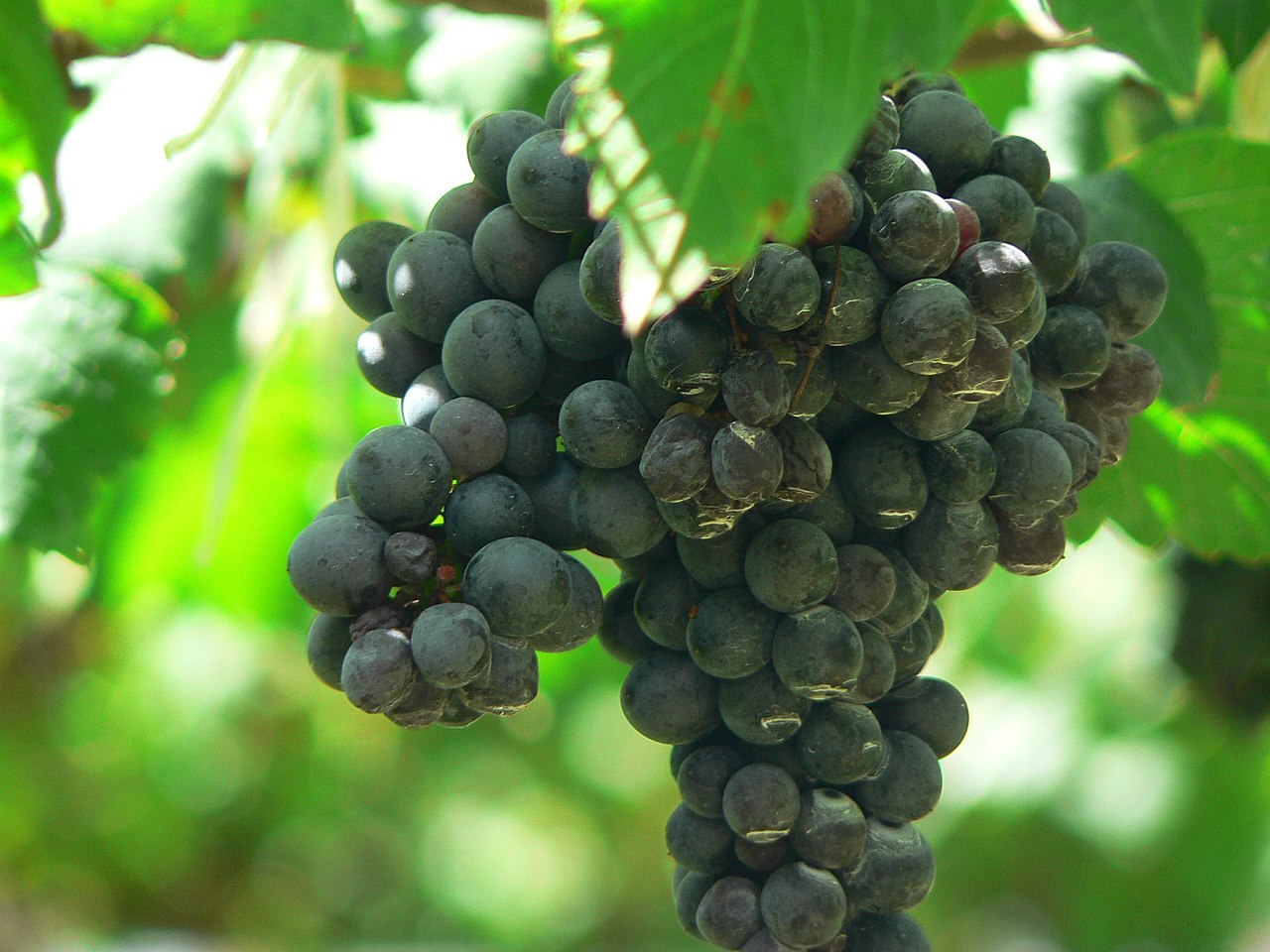
- Aroma and flavor: Wines made from Syrah grapes often have aromas and flavors of black fruits, such as blackberries, plums, cassis and black currants, along with notes of spices, black pepper, licorice, herbs and hints of leather or smokiness. Flavors may vary depending on growing region and winemaking techniques.
- Tannins: Syrah is known for its firm and structured tannins, which gives it aging capacity and a robust character in the mouth.
- Body: Syrah wines are usually medium to full bodied, with a velvety texture on the palate.
- Versatility: Syrah is versatile in terms of winemaking and is used to produce both single-varietal wines and blends, especially in the famous Châteauneuf-du-Pape wine in the Rhône region of France.
- Producing regions: Syrah is native to the Rhône region of France, but is grown in many wine regions around the world. Some of the most notable regions include Terra Alta Catalonia, the Rhône Valley in France, Barossa Valley in Australia, California in the United States, South Africa and Chile.
- Longevity: High-quality Syrah wines have good aging potential and can improve with time in the bottle. With maturity, the flavors soften and more complex nuances develop.
- Pairing: Syrah wines combine well with grilled meats, lamb, game dishes, mature cheeses and dishes with rich sauces. The robustness of these wines can complement the intense flavors of foods.
- Barrel aging: Many producers choose to age their Syrah wines in oak barrels to develop more complexity and soften tannins. This can add nuances of vanilla, spice and toast to the wine’s profile.
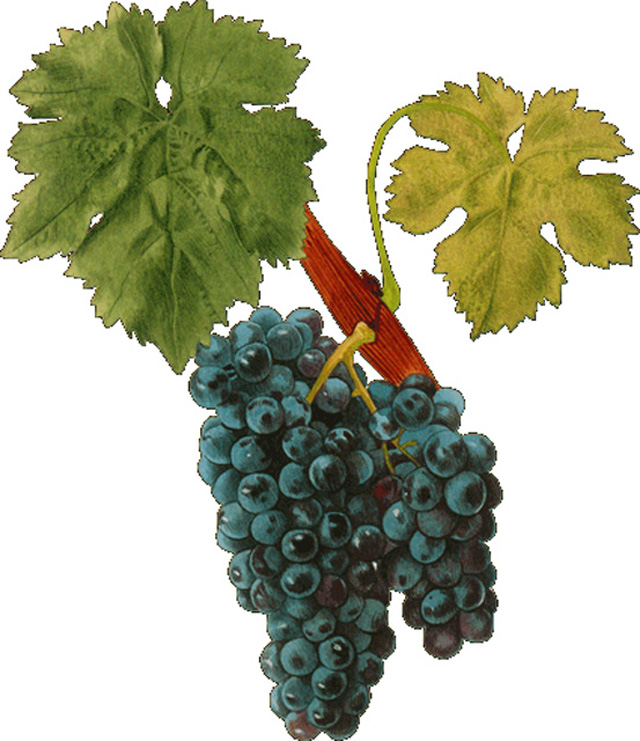
Samsó – Cariñena (CAN)
Cariñena, also known as Carignan in French and Mazuelo or Samsó in some regions of Spain, is a red grape variety widely grown in several wine regions around the world. Although at one time one of the most widely planted varieties in the world, its popularity has declined in some regions, but it remains prized in others. Cariñena is a versatile red grape variety that produces wines with fruity flavors and firm tannins. Although its popularity has fluctuated over time, it continues to be prized for its contribution to a variety of wine styles and is grown in many wine regions around the world. The most outstanding characteristics of the Cariñena grape:
- Aroma and flavor: Wines made from Cariñena grapes usually have aromas and flavors of red and black fruits, such as cherry, raspberry, blackberry and plum, as well as notes of spices, herbs and often a touch of earth. Cariñena is known for its fruity and earthy character.
- Tannins: Cariñena tends to have firm tannins, which can add structure and longevity to wines. However, the level of tannins can vary depending on the growing region and winemaking practices.
- Body: Cariñena wines are usually medium to full bodied, giving them a rich and velvety mouthfeel.
- Versatility: Cariñena is versatile in terms of winemaking and is used both in single-varietal wines and in blends with other varieties. It is one of the key varieties in the production of red wines from the Terra Alta and Priorat region, in Catalonia, Spain, where it is blended with Garnacha (Grenache) and other varieties.
- Producing regions: Cariñena is grown in many wine regions around the world, including the south of France, Terra Alta and Priorat in Spain, California in the United States, Australia and other countries. In some regions, such as Priorat in Spain, high quality wine is produced from Cariñena grapes.
- Pairing: Cariñena wines combine well with grilled meats, game dishes, mature cheeses and dishes with rich sauces. Its structure and tannins can complement intense and tasty dishes.
- Aging: Some Cariñena wines may benefit from aging in oak barrels, which can add complexity and wood nuances to the wine’s profile.
Ull de llebre, Tempranillo, Cencibel (ULN)
“Ull de Llebre” is the Catalan name for a red grape variety that is more widely known as Tempranillo in Spanish. This grape is one of the most important and widely grown red grape varieties in Spain and is used to produce a variety of red wines, including wines from Rioja, Ribera del Duero and other renowned wine regions. Tempranillo, known as Ull de Llebre in Catalan, is a versatile and appreciated red grape variety that produces wines with fruity flavors, moderate tannins and good aging capacity. It is an emblematic grape in Spanish viticulture and is used in a variety of wine styles. The most outstanding characteristics of the Tempranillo grape (Ull de Llebre):
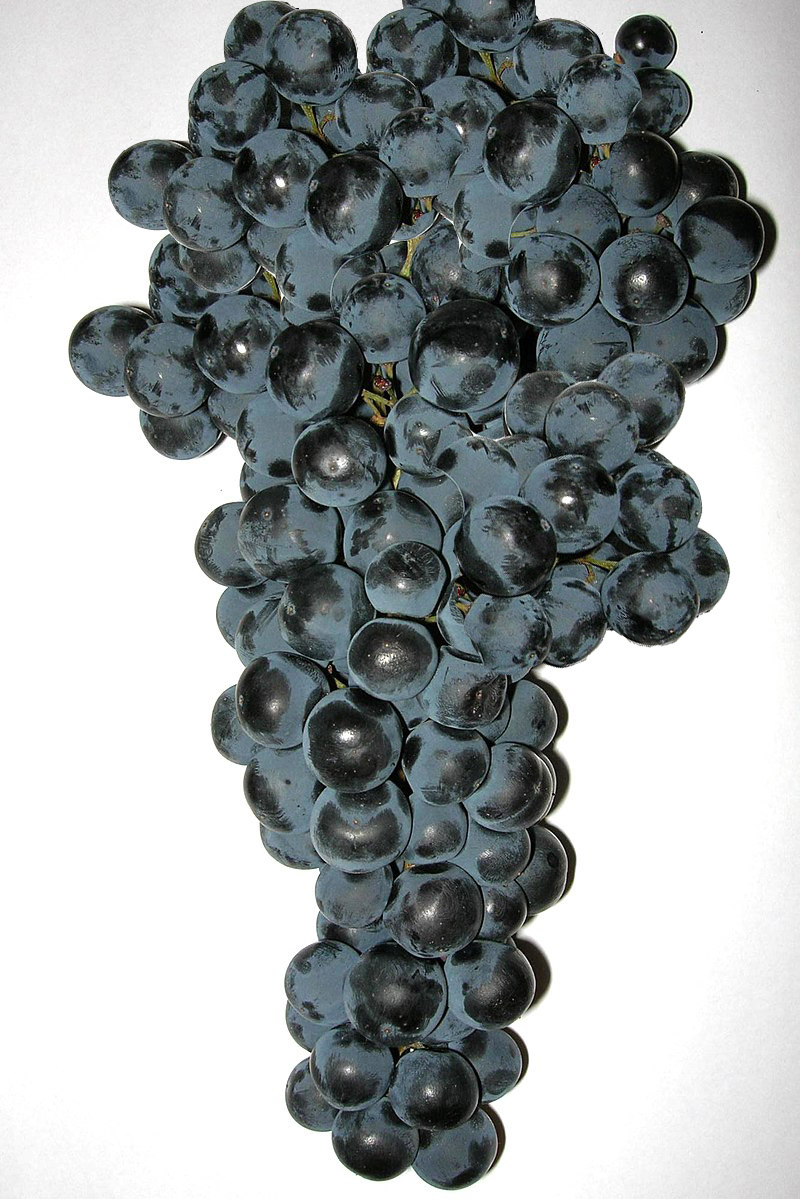
- Aroma and flavor: Wines made from Tempranillo grapes typically have aromas and flavors of red and black fruits, such as cherry, raspberry, plum, and blackberry, along with notes of vanilla, spice, leather, and wood, especially in wines that have been aged. in oak barrels.
- Tannins: Tempranillo usually has medium to moderate tannins, which provides structure and longevity to the wines. The mouthfeel can be soft and velvety.
- Body: Tempranillo wines are typically medium to full bodied, depending on growing region and winemaking practices.
- Versatility: Tempranillo is versatile in terms of winemaking and is used both in single-varietal wines and in blends with other varieties, such as Garnacha (Grenache) and Mazuelo (Cariñena) in Rioja.
- Producing regions: Tempranillo is grown throughout Spain, but is especially known in the wine-growing regions of Terra Alta, Rioja and Ribera del Duero. It is also found in other wine regions around the world, such as Portugal, California, Australia, and Argentina.
- Pairing: Tempranillo wines are versatile in terms of pairing and can accompany a variety of dishes, including grilled meats, pork dishes, cheeses and Mediterranean dishes.
- Aging: Some Tempranillo wines, especially those from Rioja, can benefit from aging in oak barrels, which can add complexity and wood nuances to the wine’s profile.
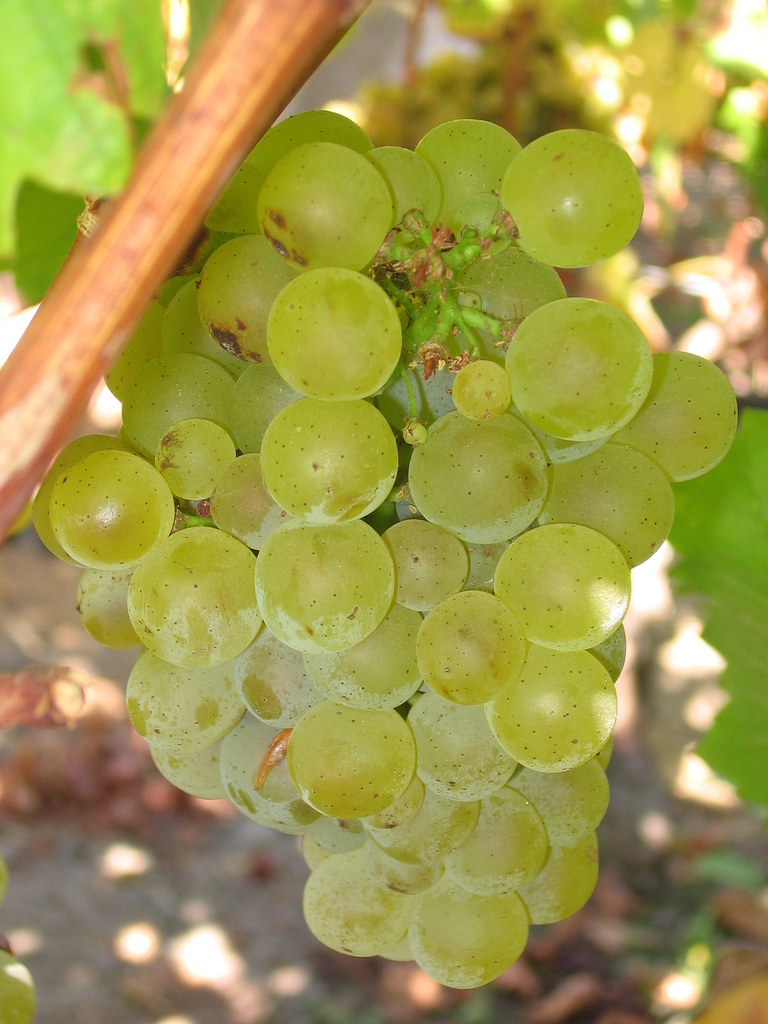
Sauvignon Blanc (SAP)
Sauvignon Blanc is a white grape variety widely grown around the world and is known for producing dry, refreshing and highly aromatic white wines. This variety is prized for its versatility and is grown in numerous wine-growing regions, giving rise to a wide range of white wine styles. Sauvignon Blanc is a white grape variety appreciated for its freshness, intense aromas and lively flavors. Their wines are ideal for those looking for dry and refreshing white wines with great aromatic expression. Its versatility and adaptability to different regions make it one of the most popular and widely cultivated white grape varieties in the world. The most outstanding characteristics of Sauvignon Blanc:
- Aroma and flavor: Wines made from Sauvignon Blanc grapes often have intense, fresh aromas and flavors of citrus fruits, such as lime, lemon and grapefruit, as well as notes of tropical fruits, herbs, freshly cut grass and often a mineral touch. The flavors are usually clear and lively.
- Acidity: Sauvignon Blanc is characterized by its high acidity, which provides freshness and liveliness to the wines. This acidity is one of the reasons why Sauvignon Blanc wines are so refreshing.
- Versatility: Sauvignon Blanc is used to produce single-varietal wines, but it is also blended into some white wines, such as Bordeaux white wines in France. It is also used in the production of sparkling wines and dessert wines in some regions.
- Producing regions: Sauvignon Blanc is grown in many wine regions around the world, Terra Alta in Catalonia, France (it is especially known in the Loire Valley and Bordeaux), New Zealand, California in the United States, South Africa, Chile and Australia .
- Pairing: Sauvignon Blanc wines are versatile in terms of pairing and can accompany a variety of dishes, including seafood, white fish, salads, chicken dishes, goat cheeses and dishes with herbaceous flavors.
- Regional Styles: Depending on the growing region, Sauvignon Blanc can take on different flavor profiles. For example, wines from the Loire Valley in France tend to be more herbaceous, while wines from New Zealand often have very expressive tropical fruit and citrus notes.
Viognier (VGB)
Viognier is a white grape variety native to the Rhône region of France, but grown in many parts of the world. This white grape is known for producing white wines with floral and fruity aromas and flavors, as well as a rich, silky texture on the palate. Viognier is a white grape variety appreciated for its floral perfume, richness of flavors and silky texture. Their wines are ideal for those looking for white wines with character and elegance. Viognier’s versatility and adaptability to different climates have made it a popular white grape variety around the world. The most outstanding characteristics of Viognier:
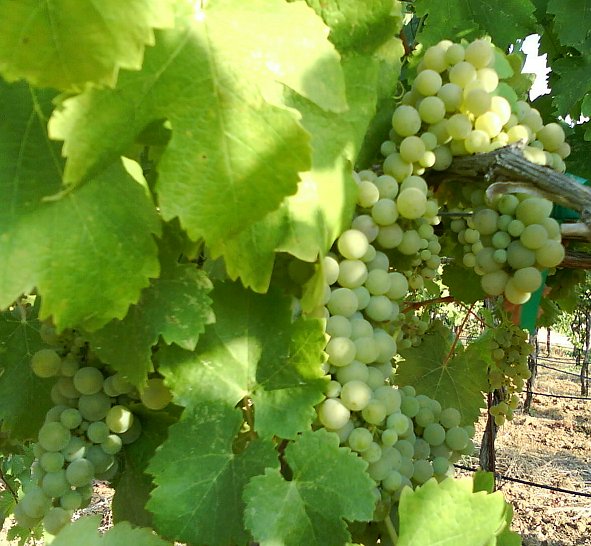
- Aroma and flavor: Wines made from Viognier grapes typically have aromas and flavors of white flowers, such as apricot blossom, jasmine, and violet, as well as white-fleshed fruits, such as apricot, peach, and pear. These flavors and aromas are distinctive and are often described as exotic and perfumed.
- Texture: One of the most notable aspects of Viognier is its texture in the mouth. Viognier wines are usually rich and unctuous, with a smooth and silky feel, making them very pleasant to drink.
- Acidity: Although Viognier wines can be smooth, they typically have moderate acidity, which brings balance to their flavor profile and helps maintain freshness.
- Versatility: Viognier is used both to produce single-varietal wines and in blends with other varieties, especially in the Côte-Rôtie region of the Rhône, where it is often combined with Syrah. It is also used in the production of sparkling wines and dessert wines in some regions.
- Producing regions: Viognier is grown in many wine regions around the world. It is especially known in the Rhône in France, as well as in California in the United States, Australia and South Africa.
- Pairing: Viognier wines combine well with seafood dishes, fish, poultry, pork, Asian dishes and soft cheeses. Their richness and fruity flavor make them suitable for a variety of foods.
- Aging Potential: Although most Viognier wines are enjoyed young to preserve their fresh, fruity characteristics, some producers make Viognier wines with the ability to age to develop complexity over time.

